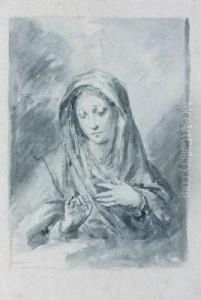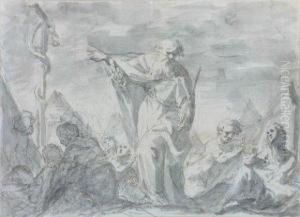Rafael Ximeno Y Planes Paintings
Rafael Ximeno y Planes was a prominent Spanish painter during the late 18th and early 19th centuries. Born on August 24, 1759, in Valencia, Spain, he began his artistic journey at a young age, studying under notable painters of his time. His early education in the arts was influenced by the Baroque and Neoclassical styles, which were prevalent in Europe during that period.
Ximeno y Planes initially trained under his father, who was also a painter, and later continued his studies at the Royal Academy of Fine Arts of San Carlos in Valencia. There, he was taught by José Vergara Gimeno, who was a significant figure in Spanish painting. He further honed his skills and was influenced by the works of other European artists, particularly those from Italy and France.
In 1783, Ximeno y Planes moved to Mexico, where he would spend the majority of his career. His works in New Spain (now Mexico) contributed to the spread of Neoclassical aesthetics in the region. He became a member of the Royal Academy of Fine Arts of San Carlos of New Spain, founded in Mexico City, and later served as its director. His influence was instrumental in shaping the artistic direction of the Academy and, by extension, the development of Mexican art during this period.
His paintings often featured religious themes, which was a common subject in Spanish colonial art. His style was characterized by a clear and precise technique, balanced composition, and a sense of grace typical of Neoclassical painting. Ximeno y Planes's work was well-received, and he was commissioned to create numerous pieces for cathedrals and other religious institutions.
Rafael Ximeno y Planes passed away on July 14, 1825, in Mexico. His legacy is preserved through his contributions to the artistic heritage of both Spain and Mexico, and his works continue to be studied and admired for their historical significance and artistic merit.

